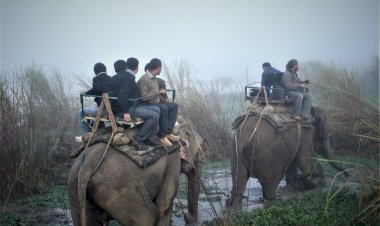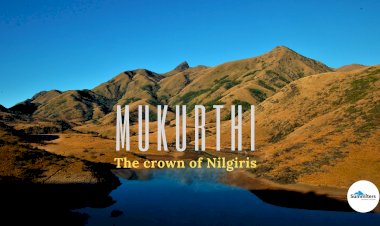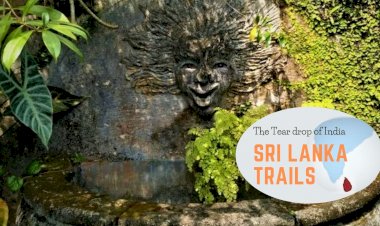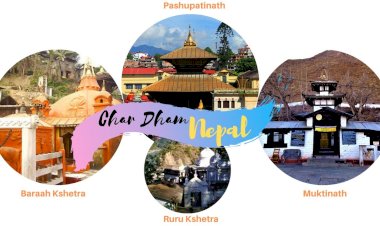10 Unforgettable Experiences to do in Bhutan
The Kingdom of Bhutan known as last Shangri La offers varied experiences for tourists visiting Bhutan. From popular Buddhist sites, Nature trails, local cuisine and wellness experiences, history, flora fauna, customs, and Culture allure the visitors with varied experiences. Here we recommend 10 best unforgettable experiences to choose from and make your tour of Bhutan memorable!
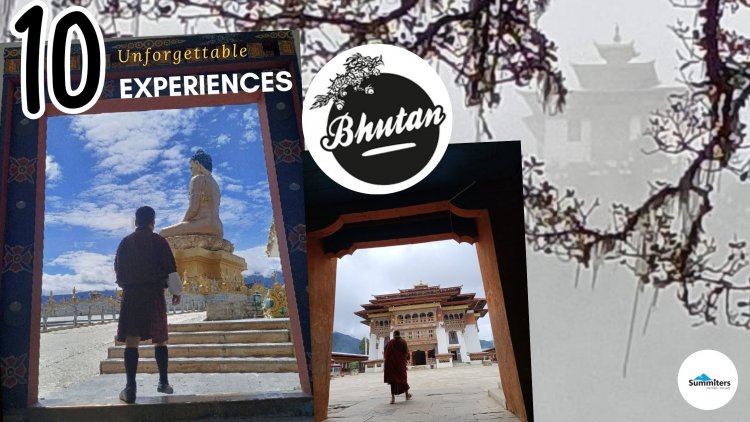
The neighbouring country, Kingdom of Bhutan is indeed a Last Shangri La and happiest country. A visitor often craves to experience the country during his holiday Here we have made a small attempt to recommend you few experiences while you ramble through the country.
1. Visit Buddha Peak and Meditate
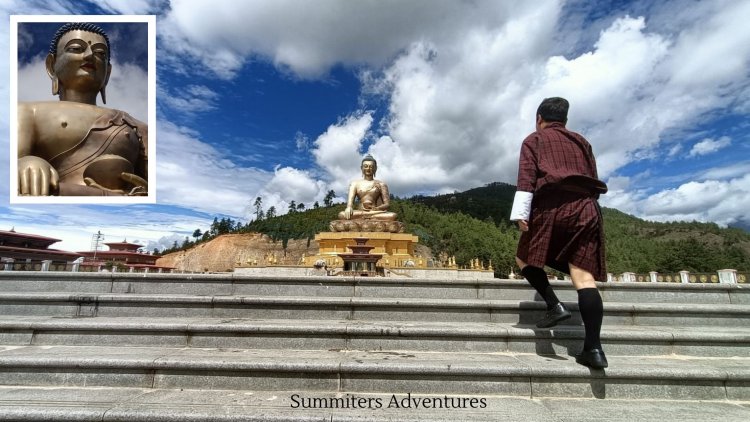
During your visit to Thimphu, after visiting Memorial Chorten you can visit Buddha Point popularly known as Dordenma located on a hillock. It is the largest Buddha statue in Bhutan and one of the largest in the world.
The winding road leads to the hillock, a flight of 289 stairs will lead you to the temple complex or if you want to skip the climb can reach the entrance gate by vehicle.
The monument has pictures of animals associated with various tales. The Sanctum has idols of Bodhisattvas and miniature idols of Buddha. You can sit in the hall and meditate in the calm surroundings.
Entrance Fee to Monument – NO
Photography Inside the monument is restricted.
2. Ride the Rapids at Punaka
In general white water rafting is an activity of Going down and crashing with swift-flowing rivers overcoming horrendous rapids, thumping, rowing and screaming with excitement and joy
But in the context of Rafting in Bhutan, it is a gentle drift down the river admiring the scenery and running a few small yet exciting rapids
Most of the rivers in Bhutan are very steep and highly rushing with limited road access makes it considerably unsuitable for white water rafting. Only a few rivers are opened for rafting considering their safe course and are within reach for adventure seekers.
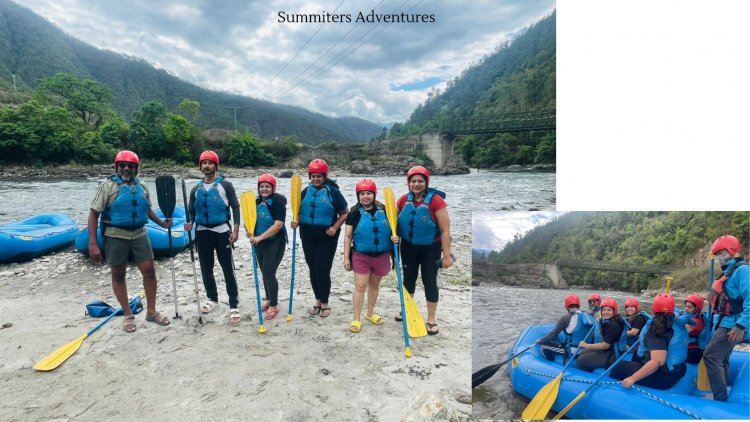
Po Chu and Mo Chu Rafting in Bhutan
Grade II+ to IV class River
The Pho Chu, with its approx 16 km course with about 15 rapids of class 2- 4 is the most popular for rafting in Bhutan followed by Mo Chu River with a 10 Km course comprising around 10 rapids with 2 – 2+ rapids.
Drifting past imposing 17th century Punakha Dzong (a fort cum monastery) watching the world’s rarest bird, the white-bellied Heron or imperial heron Ardea insignis in its natural habitat and restless Kingfishers ready to dive on the riverbank. A lush green landscape on either side makes for picture postcard views, Rafting in Bhutan is an everlasting memorable experience and never to be missed.
No special experience is required as long as you do not mind doing a bit of paddling and getting a bit wet wearing a jacket for safety– or quite possibly very wet! – Then you will have an exciting time riding the rapids in the Himalayan rivers.
3. Hike to Tigers Nest
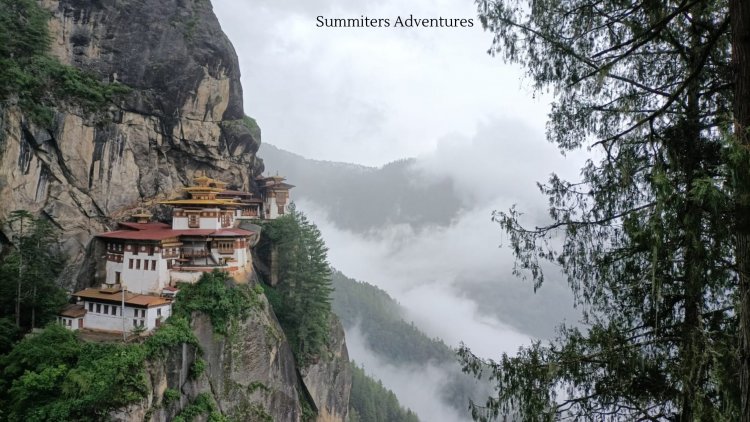
During a visit to Bhutan, one of the most recommended places to visit is Taktsang Gompa – Popularly known as Tigers Nest. A short drive from Paro brings to the base of the hill, and a leisurely 2- 3 hour uphill hike amidst pine forest brings one to the Buddhist Shrine clinging to the cliff.
The temple was built around the cave in which Guru Padmasambhava, the “second Buddha”, meditated and first introduced Buddhism to Bhutan.
Located at an altitude of 10,322 ft, and offers majestic views of mountains and valleys. A cafeteria on the midway serves as a resting point with fabulous views of the surroundings and Tigers Nest.
Entry Fee – 1000 Nu
Grade – Easy to Moderate
Entry fee payable if you wish you enter Gompa. No charges are payable if you desire to hike up to View Point.
4. Hot stone bath Experience
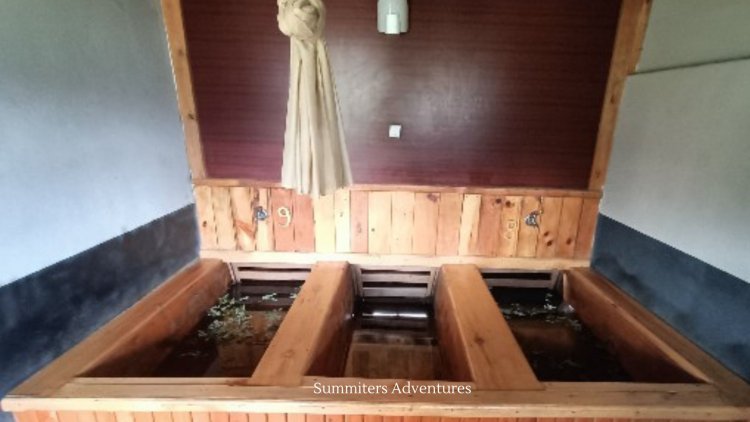
Get rejuvenated after a tiring journey and relax your body, mind and soul. !
Yes, Bhutan has a tradition associated with it. A visit to Bhutan would be incomplete without experiencing a hot stone bath, and hence this must be included on every visitor's itinerary. A Bhutanese hot stone bath is the perfect way to relax and wind down after a hike and is also believed to have numerous health benefits.
The process of a traditional Bhutanese hot stone bath is unique. It uses Menchu (medicinal water) which is nothing but fresh river water mixed with Artemisia leaves. The water is heated using river stones that are burnt on fire till they are glowing red. The temperature of the water can be increased by adding more heated stones into a wooden chamber via a chute as per comfort. This chamber is connected to the main tub (also made of wood) which contains the water.
Leave it to the tour guide. He will arrange it for you!
Approximate Cost of a Hot Stone Bath in Bhutan
Being offered in many hotels all over Bhutan, the price of one bath could roughly be around 1000 to 1200 Nu but may vary as per the facilities and additional services requested/comfort provided.
5. Visit Local Restaurants and taste local delicacies
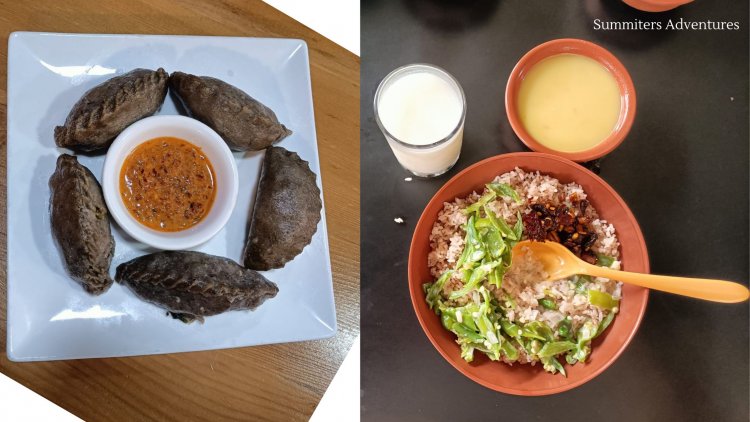
A visit to Bhutan is not confined to visiting bewitching places but also exploring the delicious culinary delights. The country sharing borders with other countries, has varied culture, traditions and food habits.
Bhutanese food employs a lot of red rice buckwheat, and maize. The most distinctive characteristic of Bhutanese food is its spiciness, with chillis being an essential ingredient of nearly every food item. The unique thing of Bhutanese chilly is, that it is used as a vegetable and chilly too.
There are lots of options to choose to eat at Bhutan. Bhutan is also known for its production of delicious local cheese and you will also be able to find cheese in many dishes of Bhutan.
The following is a list of different foods you need to definitely try on your next trip to the mountain kingdom - Bhutan:
Ema Datshi
Ema Datshi is a popular stew made of chillies and cheese in Bhutan. And is also the national dish of Bhutan. It is undisputedly the foremost widespread dish within the country, and any discussion concerning Bhutanese food cannot go without the mention of Ema Datshi. You cannot miss having this delicious dish of Bhutan when you visit the country.
Kewa Datshi
Kewa datshi is another variant of the cheese stew of Bhutan and uses potatoes as the main ingredient. A milder version for the sensitive palate, potatoes are thinly sliced and sautéed in butter. Cheese and sometimes chillies are added to the mix. This Bhutanese dish is a great and delectable option for those who can’t tolerate heat in their food.
If you are in Thimphu visit the Samkyi Restaurant which is known for authentic Bhutanese Food
Hoentay
It is similar to momos, but they are made with a buckwheat dough wrapper. The dumplings are usually filled with a combination of local spinach or turnip leaves and cheese, and again, they can either be steamed or fried.
Khur-le
Khur-le is a hearty Bhutanese breakfast food item, ideal for cold climates. The pancakes are made out of buckwheat, barley, or flour. It goes well with different Bhutanese food like ema or shakam datshi, or with eggs and sauces.
Saag Datshi – Spinach and cheese gravy
Spinach and cheese bring in a refreshing green revolution to the dairy-heavy dish. The fresh flavours of spinach ride along the creamy texture of cheese to make this an absolute comfort food while you are in Bhutan. I can bet by the third day you would want one meal of Saag Datshi with some red rice to make you feel comforted.
Ezay
If there is one dish that you will find in every Bhutanese meal spread, then it is the hot Ezay. And almost every ezay will be a tad bit different – just like the fingerprints of the chefs who make them. It is basically Bhutanese chilli chutney – can range from dry to gravy. Super hot to moderate. No matter what dish you are eating consider eZay. No doubt it tastes awesome!
If you are staying in Paro then visit Mountain Café. You find an array of dishes of your choice
Suja
The most offered local welcome drink of every household in Bhutan. Bhutanese salted butter tea has a taste of its own, Suja has a beautiful brownish-pink colour and has butter instead of milk, and salt instead of sugar. Good high-fat drink to counter the high mountain winter cold.
6. Hike on the butterfly and birding trail to Gangtey
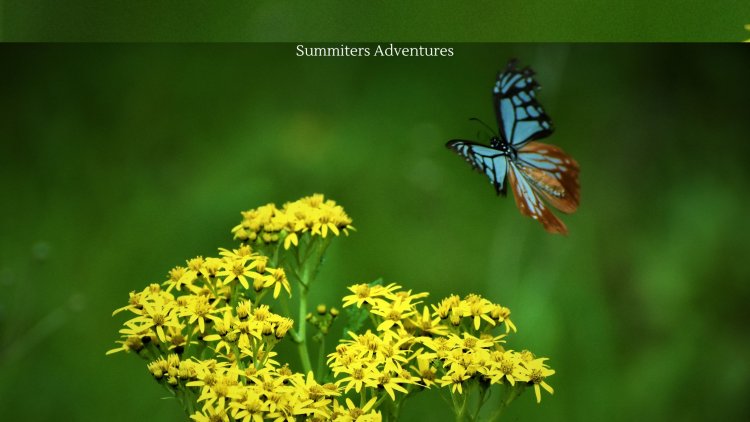
The Gangtey Nature Trail popularly known as Heritage Trail is a gentle two-hour trek that lets you soak up the remarkable bowl-shaped Phobjikha Valley. Either you can start or end at the 17th century Gangtey Monastery, you’ll pass through a fairly flat terrain that culminates at a point will spellbinding views. En route, you’ll pass grass planes, green pastures, and artistic farmhouses. Livestock grazing at leisure and dense pine forests before reaching a vast open space of the wide valley.
On the trail, if you closely observe you will spot a hoope, white-throated laughing thrush, white wagtail, yellow-breasted green finch, old world babblers, tree creepers, endangered black-necked cranes that make Phobjikha Valley their breeding ground in winter and can be observed feeding on the valley marshlands from late October to mid-February. Your walking pace is slowed down by the sight of fluttering butterflies such as chocolate tiger, Swallow tail, Common blue bottle, Pale grass blue, Indian fritillary, common lady, and Chestnut tiger, Your driver will meet you and your guide at the exit point and on the way back to your hotel you can call into the Crane Information Centre to learn more about these fascinating birds and their place in Bhutan's culture and beliefs.
7. Taste the local drink, Suja, and Ara
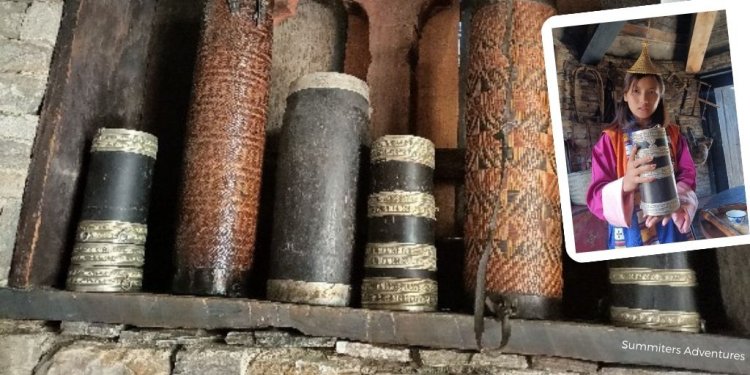
In the Bhutanese culture, the guests or visitors are welcomed by serving homemade drinks with great respect. Among them, Suja and Aara are common in every household.
Bhutan has a nice spread of drinks—from alcoholic to non-alcoholic—there’s something for everyone.
On that note, Bhutan has an alcohol culture, especially in eastern districts.
Serving beverages or alcohol is a sign of respect, honour, and hospitality. Alcohol is offered as a welcome drink and farewell drink; it is consumed with food, it is dessert, it is drunk before bed, and also first thing in the morning. People drink it as a blessing for the road and to wish one good health.
Suja
Suju (butter tea) is a creamy and savoury tea popular among the Bhutanese people.
As the name suggests, a generous helping of butter is blended with tea leaves and salt.
It’s a go-to drink, a staple at celebrations like Losar (Bhutanese New Year), weddings, or other religious events.
On top of that, the butter will keep you warm during the winter!
Ara
Ara is the national drink of Bhutan.
It contains alcohol.
Grains are fermented, organically and the liquid produced from the fermentation process is then used to make Ara. Ara is usually creamy, clear, or white in colour.
Ara is popular at religious events. It is also a staple at archery tournaments. Apparently, their a belief that alcohol improves the archers’ aim.
Word on the street is that the best way to enjoy Ara is with an egg that has been cooked with butter.
If you visit the land of Thunder Dragon, don’t forget to give try!
8. Birding tour from Kili Gompa to Chele La
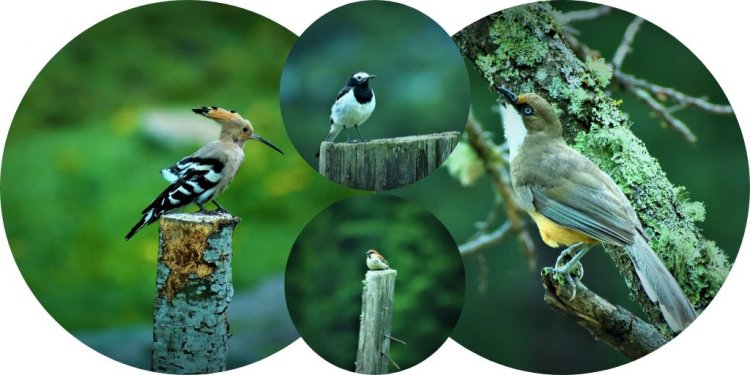
Chele La Pass 3988 m is one of the most beautiful passes in the country of Bhutan and a hike on the ridge to Kila Gompa Nunnery gives you a breathtaking view of the Paro Valley on one side and the Haa Valley on the other.
It is about a drive of an hour and a half from Paro and less than an hour from Haa. The Kila Gompa nunnery or a Chela La Goempa is one of the unexplored hiking trails in Bhutan. The trail is a haven for birders, Take a guided tour with a naturalist, and you will surely spot Nutcrackers, Khalij Pheasant, Babblers, Barred Cuckoo doves, Woodpeckers, Golden throated barbet, Himalayan Monal, Bloody Pheasant, Scarlet Minivet and Himalayan Monal, it is also a home for nuns and a place far away from the hustle and bustle of the city.
The Kila Gompa nunnery is located on the cliffs below Chele La Pass at about 3,500m. In the dizzying sheer Cliffside, several retreat huts and around seven small temples are built clinging to the cliff and it is truly mesmerizing
Duration of Trek – 2 Hours
Grade - Easy
9. Know about the Phallus temple
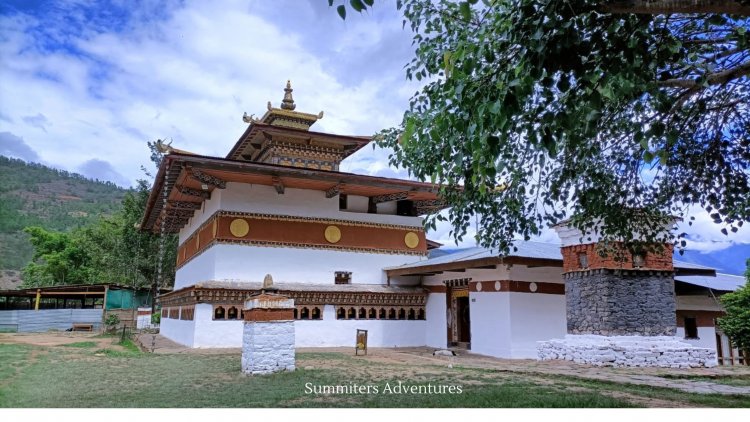
Call it the temple of the divine madman, Chimi Lhakhang or the temple of fertility, a unique shrine located on a Clifftop in Punaka Valley. There are various stories existing about the construction of the shrine and Divine Man. The Phallus is worshipped as an insignia of fertility. The monastery is the repository of the original wooden symbol of phallus that Kunley brought from Tibet. This wooden phallus is decorated with a silver handle and is used to bless people who visit the monastery on pilgrimage, particularly women seeking blessings to beget children. The tradition at the monastery is to strike pilgrims on the head with a 10-inch (25 cm) wooden phallus.
The Chimi Lhakhang visiting timings are 9 AM to 5 PM. Photography is not allowed in the sanctum. It can be visited by anyone on any day of the week.
There is an entry fee of 500 Nu for this monastery.
10. Short hike to Druk Wangditse Lhakhang
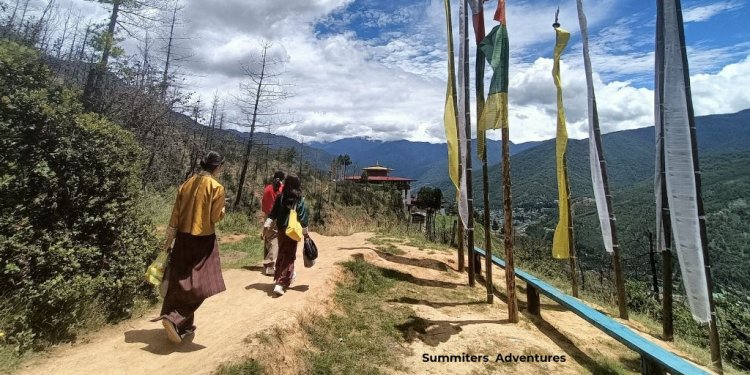
A temple reconstructed to its glory and dedicated to his majesty the king of Bhutan lies strategically located overlooking the Thimpu city.
During a visit to Thimpu, one can go on a hike to the temple. There are numerous routes to reach Druk Wangditse Lhakhang. However, pilgrims have to hike to reach the temple as it's not accessible by road. However, fret not as the hiking trail is well marked. The Druk Wangditse trail is considered one of the easiest hiking routes around Thimphu. One can either start hiking from Sangaygang which is popularly known as BBS Tower or from Zilukha Nunnery or Dechen Phodrang.
Many nature enthusiasts choose to hike from BBS Tower.
Interesting facts about Goemba
Druk Wangditse Lhakhang is said to have been built in 1715, to serve as the seat of the 8th Druk Desi. It is among the oldest temples in Thimphu, and an important national heritage site today.
The vicinity provides excellent views of the Samteling Palace, home of the fourth King, Tashichhoedzong and the whole of Thimphu Valley.
The architecture, doorways, windows, wall paintings and location is awe-inspiring.
Duration – 3 hours
Grade – Easy








